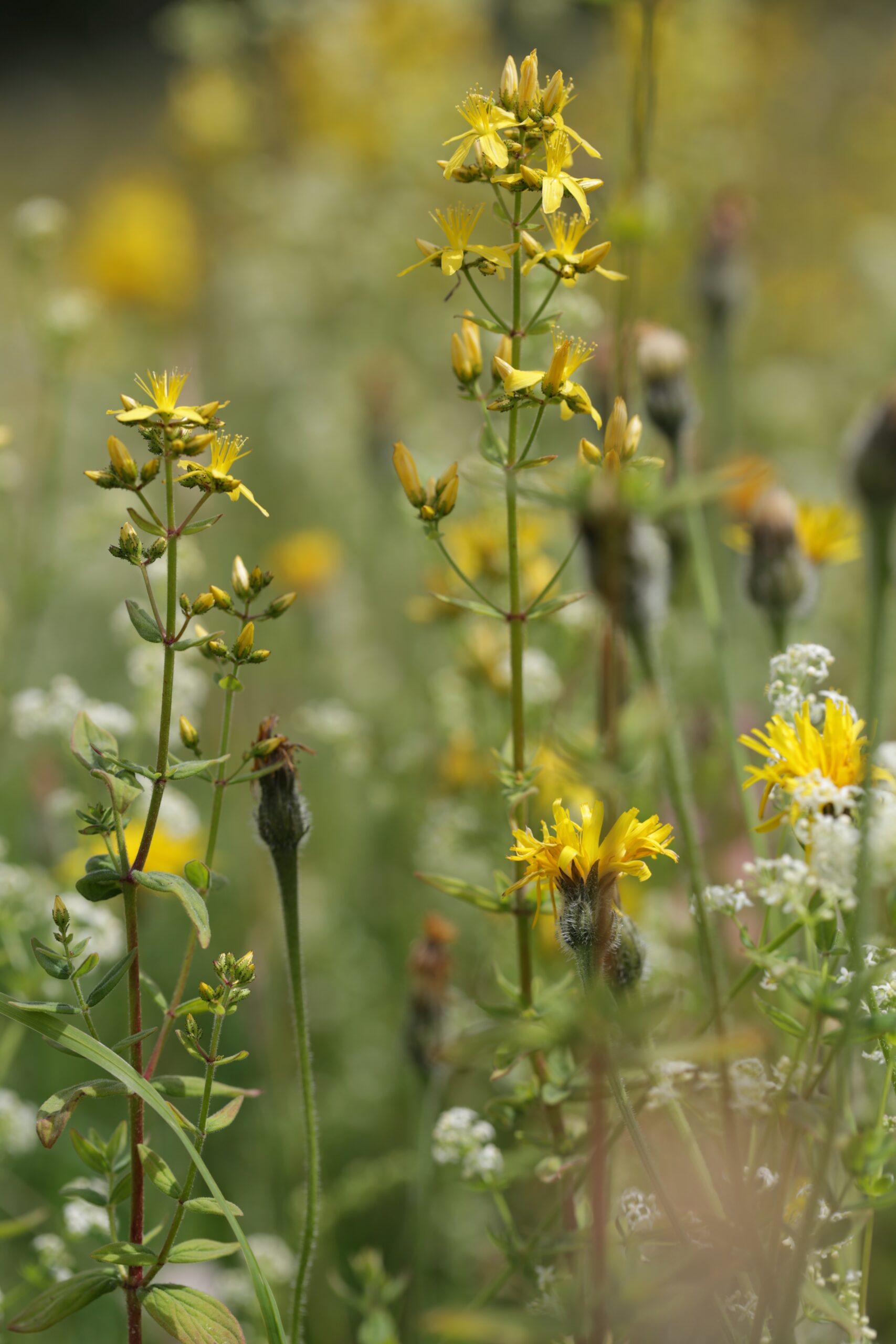Description
Pale St John’s-wort is a handsome British native perennial found in open woodland, hedgerows, scrub and rough grassland. As its common name suggests Hypericum montanum is distinctly lighter than other British members of this genus with a pale green stem and pale-yellow flowers. Identification can be confirmed by a combination of features including stamens that are grouped in bundles of three, leaves that are hairless above but downy below, an erect, rounded stem without ridges, groves or wings, and the presence of a few black glands along the margins of the leaves.
As with most Hypericums Pale St John’s-wort contains an aromatic organic compound called hypericin which is used in herbal medicines as a mild antidepressant. We do not recommend using our plants for this purpose but what may be of more relevance is that this drug can also cause photosensitivity in humans and grazing animals and in severe cases can lead to blistering of the lips and tongue. Such incidents are very rare but its worth keeping in mind for those with grazing stock.
Habitat Information
It is almost completely confined to the chalk or limestone regions of England and Wales and is not found as a native in Scotland, Ireland and over large parts of the midlands and home counties. Although not rare, its population and distribution suffered in the early decades of last century and whilst this decline is far less than it was, its numbers are still decreasing mainly due to habitat loss.
Growing Information
In the wild, germination is mainly in the autumn and winter, but some can germinate following spring cultivations. Easy to grow from seed sown any time from August to late April, but best sown before the end of March.

